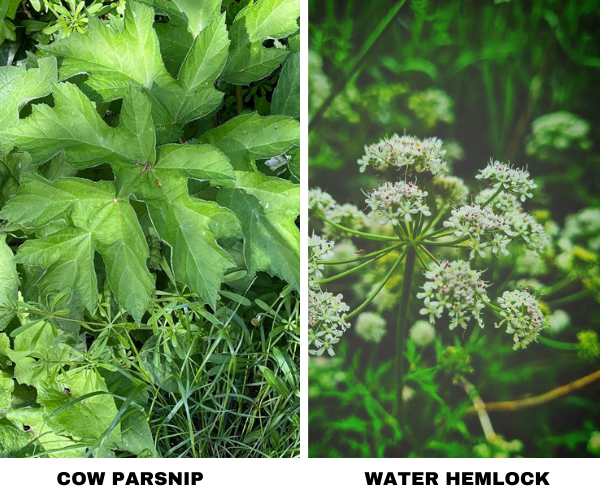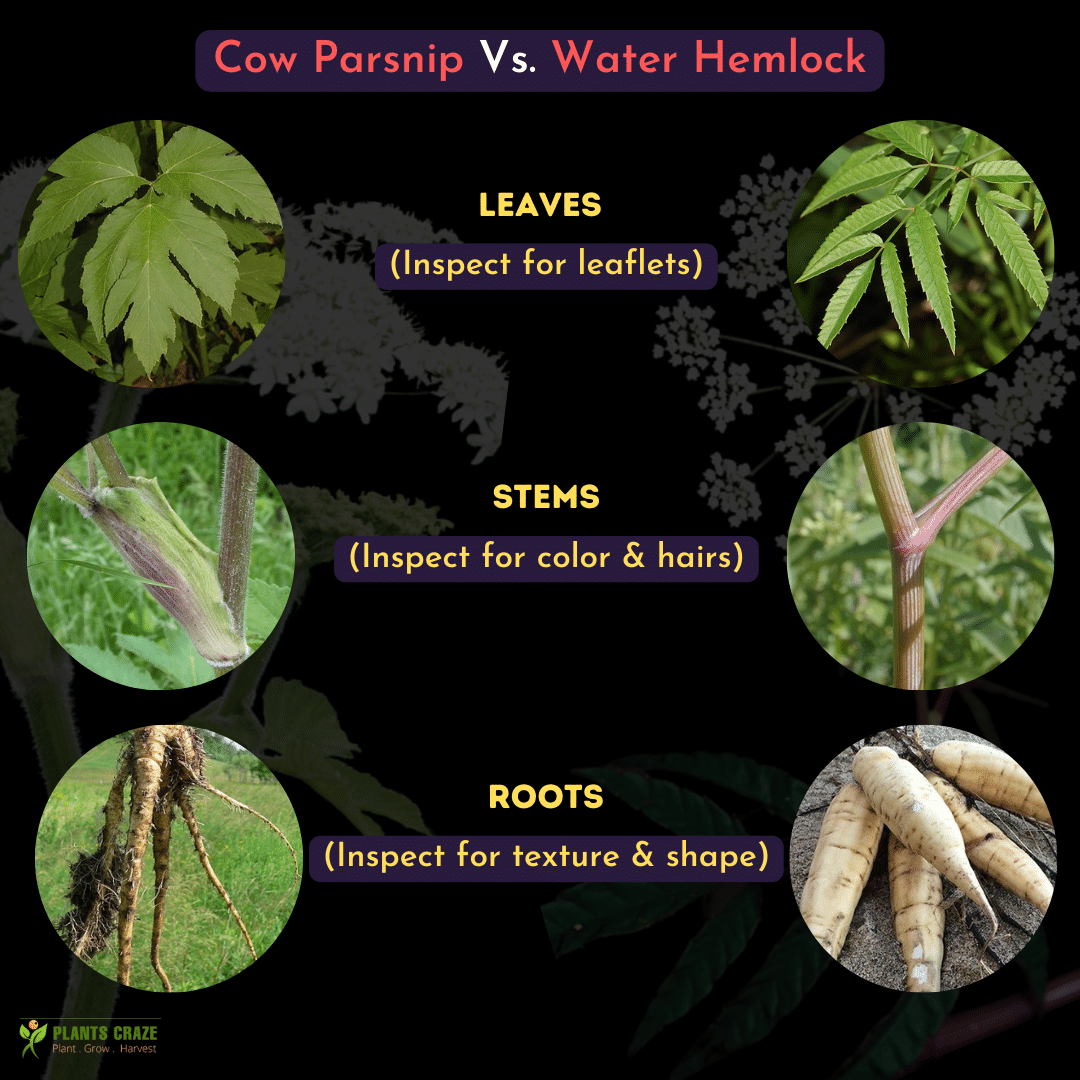Have you heard about the recent Water Hemlock vs. Cow Parsnip debate venting within the foraging community?
Although both plants are alike, only one is edible and meticulous attention can distinguish these poisonous herbs.
Continue with the article to clear up other confusing buzzes regarding Cow Parsnip vs. Water Hemlock before putting your life in danger!
Cow Parsnip Vs. Water Hemlock: Similarities
Often people mistake the Cow Parsnip for Water Hemlock and other similar perennial weeds like Giant Hogweed and Poison Hemlock.
Both Cow Parsnip and Water Hemlock have similar umbel inflorescence with small white flowers blooming in clusters.
Additionally, both of these plants grow nearby waterbodies. Hence, they have similar, if not the same, growth habits and flowering seasons (between May to June).

Also, Cow Parsnip vs. Hemlock debate is prospering as both plants belong to the Apiaceae family with other poisonous members like Wild Carrots.
Cow Parsnip Vs. Water Hemlock: Differences
Cow Parsnip grows bigger and blooms 1-2 months earlier than Water Hemlock.
Firstly, take the leaf size, as the Cow Parsnip leaves are 6-24 inches long while the Water Hemlock leaves are 3-6 inches in length.
Additionally, the Water Hemlock leaves are elliptical to lance-shaped with slighter leaflets.
Contrarily, the Cow Parsnip leaves are obovate to orbicular in shape with broad leaflets.

Moreover, Cow Parsnip has thick, coarse, and tapering tap roots, much more similar to the roots of Wild Parsnip.
But the roots of Water Hemlock are comparatively smoother, curved, and clustered.
Further common differences between the Cow Parsnip and Water Hemlock are highlighted in the table below.
| Features | Cow Parsnip | Water Hemlock |
|---|---|---|
| Leaf Color | Dark green with matte finish | Light green with glossy shine |
| Plant Height | 4-10 feet | 3-6 feet |
| Blooming Time | April to June | May to September |
| Flower Number | 15-30 rays in the umbel flowers | 10 or more rays in the umbel flowers |
| Flower Cluster Spread | 12 inches across in diameter | 6 inches across in diameter |
| Fragrance | A mix of Parsley and Aniseed | No smell at all |
| Toxicity | Low to mild toxicity The sap can cause irritation and rashes to the skin. | High toxicity All parts of the plant is highly toxic to pets, livestock and humans. |
You might want to examine the similarities and differences between the Cow Parsnip and Poison Hemlock. One is more fatal than the other, but they look so similar!
From Editorial Team
More on uses & toxicity!
Cow Parsnip can soothe colds and sore throats, but it has a strong flavor, and some cannot tolerate it.
Though Water Hemlock is a medication for migraine headaches and painful menstruation, cicutoxin can severely cause poisonous effects in livestock and humans.


